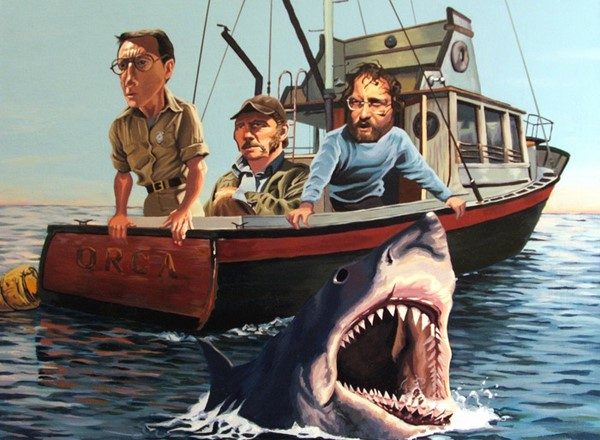50 years ago was the start of a wonderful relationship for me. This was the year that I discovered Mel Brooks. Both “Blazing Saddles” and “Young Frankenstein” came out this year, and I saw them with my high school friends who all laughed as loud as I did. We knew we were in the presence of somebody who knew how to be funny, especially to high school boys. “Blazing Saddles” was the first of these two films to be released in 74, and it’s raucous, irreverent, and some times down right offensive. It was also a western, which I have a deep abiding Love for.
In spite of my admiration for “Blazing Saddles”, I’ve always felt that it was the second best Mel Brooks film of 1974. “Young Frankenstein” goes beyond silly parody, to be a genuine tribute to and echo of the classic Universal horror movies. Of course it is hysterical, there was little doubt that with the input of Brooks and co-screenwriter Gene Wilder, that this is going to be incredibly funny. It turns out that it is also incredibly sweet, with a soft spot for all of the characters in the film, even some of those loathsome villagers who think it’s time for a riot. There is something to laugh at and embrace in just about every scene.
To start off with, they made the film in black and white. In 1974 that was not very typical. Sure there were a few other films at the time that used black and white to suggest the past. Films like “The Last Picture Show”, “Paper Moon”, “Lenny” and a few more, They all use black and white to draw attention to themselves in a way that made them stand out in the crowded ’70s field. But in the field of comedy, you don’t get a lot of black and white films that are contemporary, until Woody Allen gets going a few years later. The truth is, this movie wouldn’t have worked in color, because our collective memory of the Universal films is black and white. Boris Karloff may have had green face makeup when the original Frankenstein was created, but we only saw the black and white and that’s what we remember. It would have been disturbing to have Peter Boyle on screen as the monster with a green face. Besides, all those great sets that were being used to make the movie wouldn’t look nearly as Gothic and creepy if they were in color. The villagers walking through the forest with fog rising from the ground in black and white just makes sense.
It would be pretty hard to go wrong with a cast that includes Gene Wilder, Marty Feldman, Madeline Kahn, Teri Garr, and Kenneth Mars, but when you add a surprise guest performance by my favorite actor in a completely unexpected role, I’m just going to have to say this film approaches perfection. Let’s face it Gene Hackman, as an avuncular blind man stumbling his way through making a new friend, may be the funniest 5 minutes in the whole movie, and that saying something.
The John Morris score is also something pretty special. It recalls Frankenstein with its limited score, Dracula with its borrowed themes, and classical source music. The little horn section gets its own joke when Marty Feldman as Igor, plays his little horn to accompany Inga on the violin. It’s guaranteed to get a chuckle for you. Next to the sequence with Gene Hackman, the dance routine with Gene Wilder and Peter Boyle to “Puttin’ on the Ritz” maybe one of the most bizarre, ridiculous, and ultimately perfect realizations of the absurdity of this story. Super duper.
As family-friendly as Young Frankenstein is, there are a couple of raunchy jokes built into the movie, especially at the end. Most of these will sail over the heads of kids, but teens and adults will smile at the sexual innuendo that is never explicitly stated. The film is certainly not as ribald as Blazing Saddles, but it’s not G-rated for a reason. We are reminded once again how sadly we miss Gene Wilder on screen, his performance is one for the ages. The moment of his frustration when he can’t get his two assistants to understand what he’s asking for as he’s being strangled by the monster, is both pantomime perfect, and then when he gets his voice back vocally hysterical. I have no patience for anybody who doesn’t think this film is funny. It’s so funny that I was amused by the slot machine that was based on it and was ubiquitous in Vegas two decades ago. Too bad you can’t find those slots now, I’m really in the mood for dropping some coin and hoping to get a bonus.


